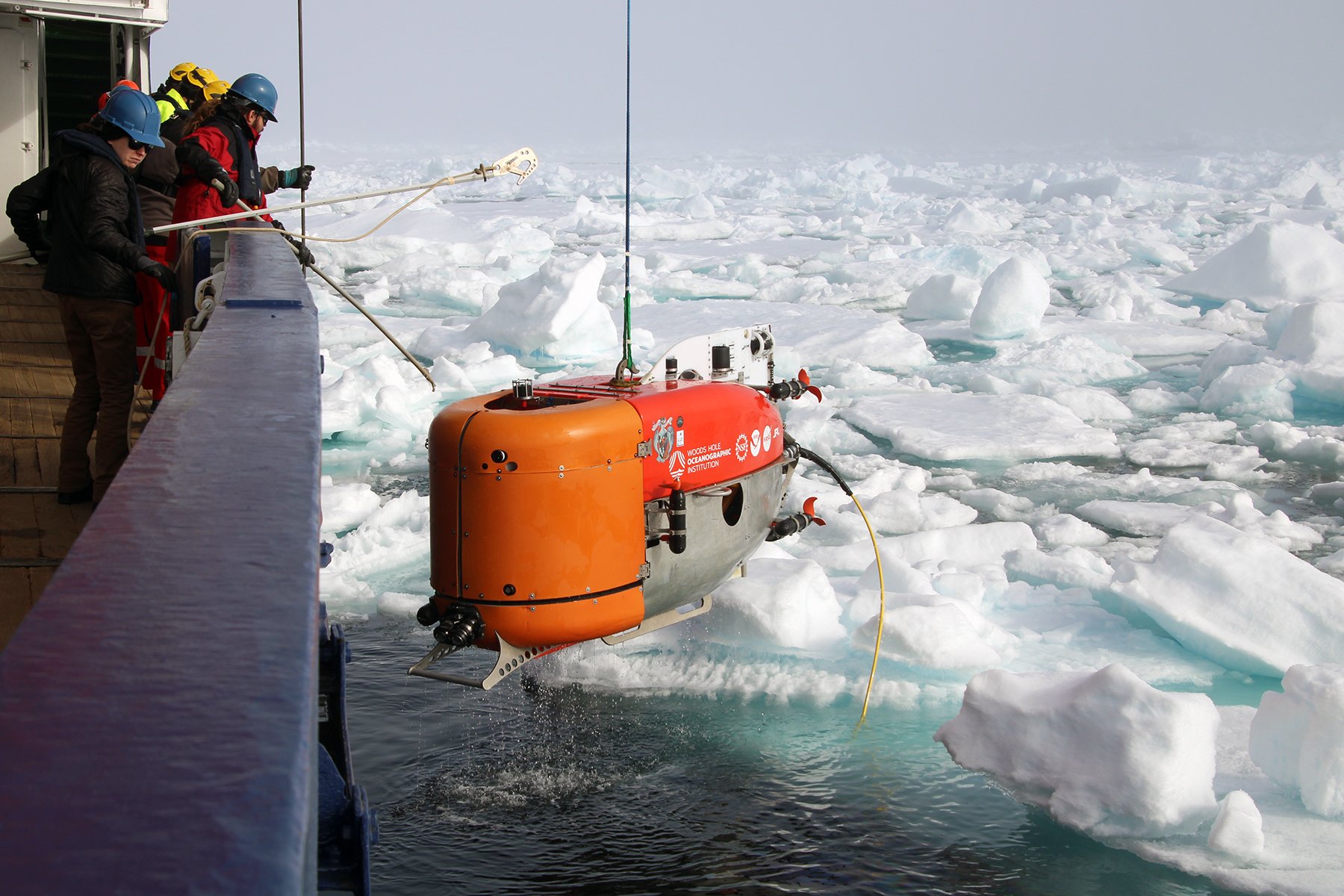Published by Eos, photo by Chris German (copyright WHOI)
Both Earth and Saturn’s quirky moon Enceladus host ice-covered oceans.
They likely share another striking feature. For a decade, scientists have inferred the presence of hydrogen-rich hydrothermal vents on Enceladus, which may inject its seas with ingredients for primitive life. And they have now located three such vent sites—possible proxies for those on Enceladus—beneath Earth’s Arctic Ocean.
Last year, a NASA-funded international team deployed an uncrewed submersible into Arctic waters near the North Pole. The researchers explored a vent field dubbed Lucky B—the third they thoroughly explored. All three sites (out of the 10 known to exist on the Arctic seafloor) release plentiful molecular hydrogen and methane, but their geochemical recipes are surprisingly distinct, according to marine geochemist Chris German of the Woods Hole Oceanographic Institution (WHOI).
“We thought there was a good chance that somewhere in the Arctic we could find hydrogen-rich vents, but now we’re three for three,” said German, who reported the team’s research on 11 December at AGU’s Annual Meeting 2024 in Washington, D.C. “It turns out there are lots of different ways to get hydrogen-rich venting in these [Arctic] geologic settings. That’s encouraging if you want these vents to [also] be present in space.”
Hidden in the Cold Deep
Hydrothermal vents pockmark many areas of Earth’s seafloor, but the forbidding Arctic Ocean poses special challenges to exploration. German and his colleagues first published evidence of hydrothermal vents in the Arctic about 20 years ago. By 2014, German had helped engineer a robot capable of braving an icy descent. In the decade since, the submersible and other tools have explored three hydrothermal vent fields along ultraslow-spreading Gakkel Ridge adjacent to the North Pole: Aurora, Polaris, and—most recently, in 2023—Lucky B. The three sites sit within a few hundred kilometers of each other on the 1,800-kilometer-long ridge.
Each site releases hydrogen and methane through a similar process: Cold seawater slips through cracks in Earth’s crust at the ocean floor, reacts with superhot rocks below, and then—chock-full of new chemicals—is ejected back into the sea at temperatures of up to 370°C (698°F).
However, the geologic compositions of the rocks fueling the Aurora, Polaris, and Lucky B sites are notably different, with varying ratios of silicon, magnesium, iron, and other elements. As a result, the hot, hydrogen-rich fluids from each venting area have different chemistries.
Even so, all the sites spark blooms of microbial activity in the dark seawater, with chemicals, rather than sunlight, acting as an energy source.
“It’s really stunning to see that on one relatively short ridge, there’s such a diversity in systems that can produce hydrogen, which can feed microbial life,” said marine geoscientist Elmar Albers, also at WHOI. Albers is first author on a study of Polaris, recently accepted for publication, and another focused on a comparison between Lucky B and the other two sites, slated for completion in 2025.
Clues to a Faraway Moon
Between 2004 and 2017, NASA’s Cassini spacecraft explored Saturn and its flock of icy moons. The spacecraft’s orbit passed through plumes of water vapor expelled from cracks in Enceladus’s icy shell. Those plumes, which showed concentrations of hydrogen, carbon dioxide, methane, phosphates, and tiny rock particles, added to the evidence of an internal ocean and a warm seafloor, powered by the moon’s internal heat.
Tantalized by these potential signs of microbial life in an alien sea, a national panel of planetary scientists advised NASA to pursue a flagship mission to Enceladus within a decade.
The new Arctic Ocean venting studies are significant for such missions far beyond just the “gory details” of geochemistry, said geochemist and planetary scientist Christopher Glein of the Southwest Research Institute, who studies icy moons but was not involved in this research.
“We can go study these sites at the bottom of the seafloor firsthand,” Glein said, “whereas we’re still scratching the surface trying to understand what’s possible on other planetary bodies.”
—Anna FitzGerald Guth, Science Writer
Citation: Guth, A. F. (2024), Arctic hydrothermal vents may resemble those on Enceladus, Eos, 105, https://doi.org/10.1029/2024EO240576. Published on 17 December 2024.
Text © 2024. The authors. CC BY-NC-ND 3.0
Except where otherwise noted, images are subject to copyright. Any reuse without express permission from the copyright owner is prohibited.
